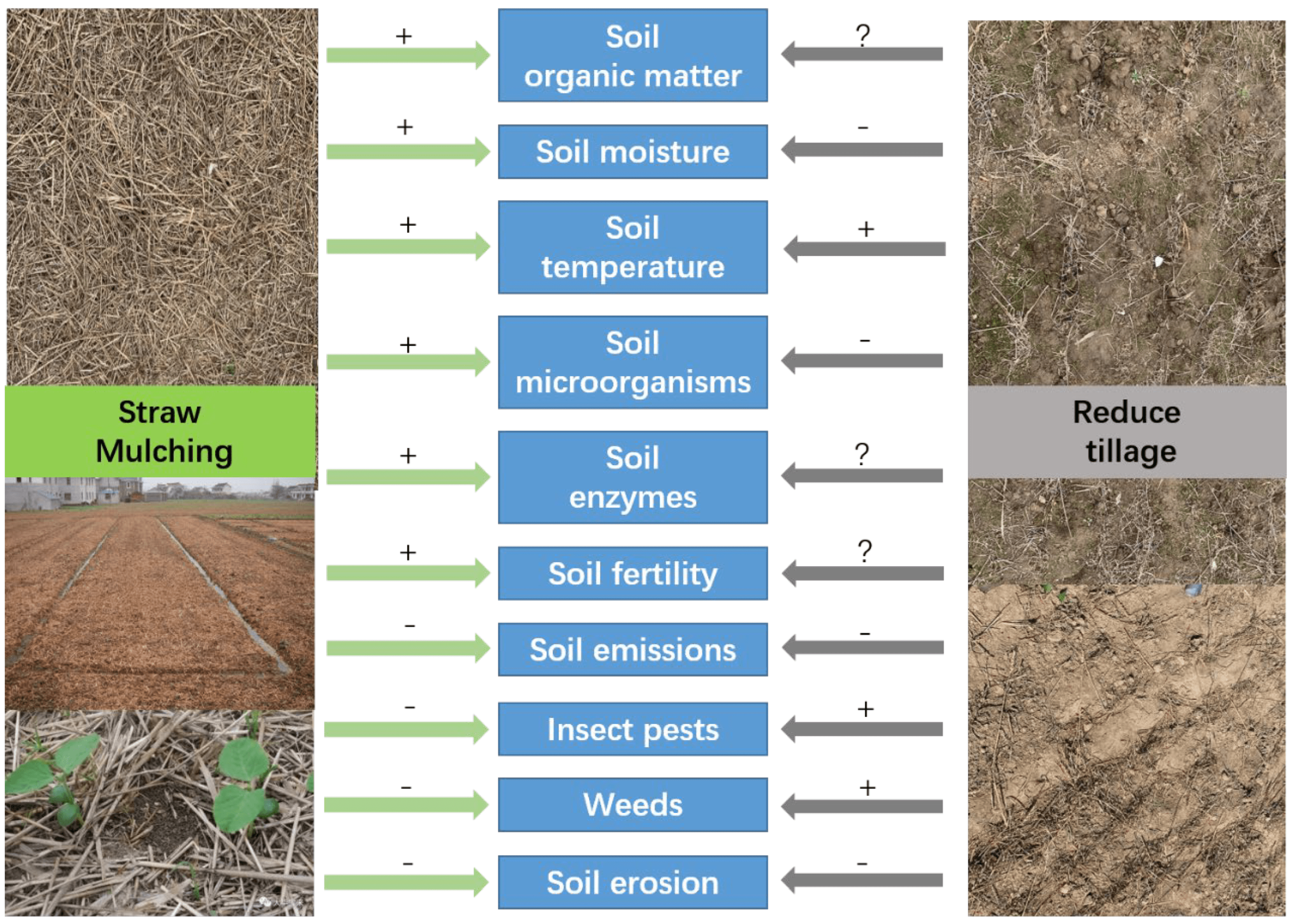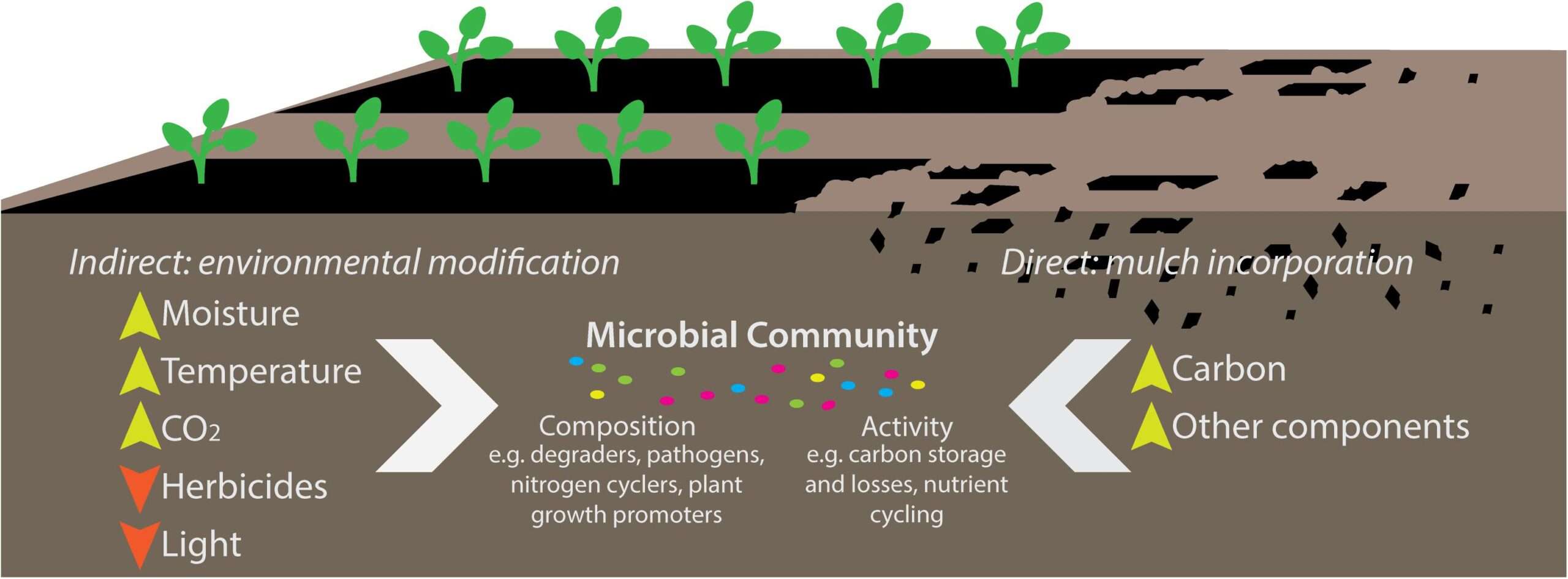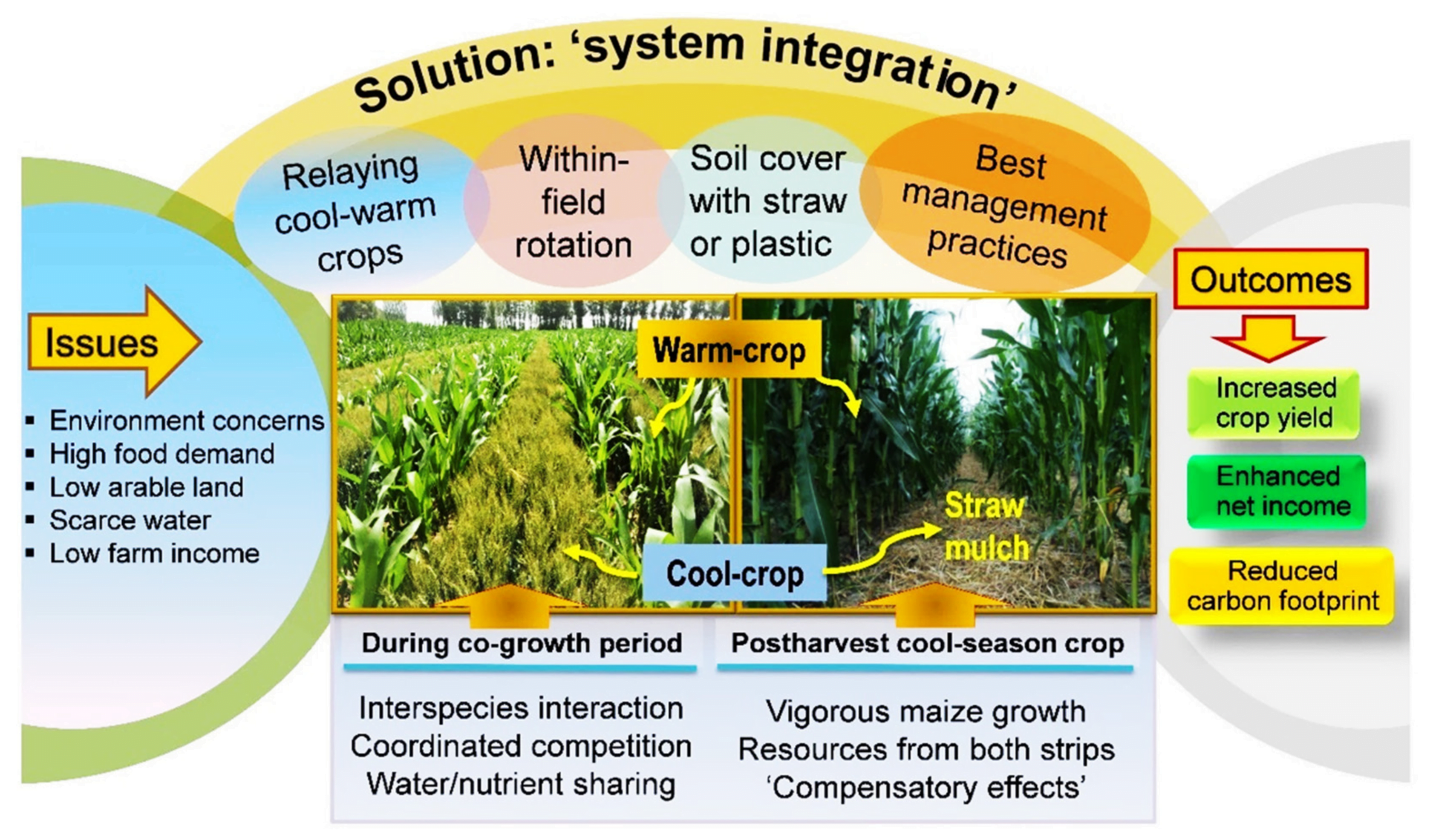When it comes to the growth of plants, the type of mulch you use can have a significant impact. Organic mulches like grass clippings, straw, hay, wood chips, and compost allow most plants to grow through them, while inorganic mulches like plastic, rubber, or decorative pebbles prevent plants from growing through. If you’re planting bulbs, they have enough stored energy to push through thick layers of mulch, but if you’re planting seeds, it’s best to avoid mulch altogether. Even if you trim your plants to the ground, they can still grow through organic mulch, as long as it’s properly applied – around 2-4 inches deep and not piled against the stems. And the benefits of mulching go beyond just plant growth, it also helps suppress weeds, conserve moisture, regulate soil temperature, and enrich the soil with nutrients over time. While mulch can’t be a substitute for soil, it can definitely contribute to soil health and fertility as it decomposes, and the rate of decomposition depends on factors such as type, environmental conditions, and thickness of the mulch layer.

Impact of Mulch Type on Plant Growth
Mulching can have a significant impact on the growth and overall health of plants in your garden. The type and thickness of mulch used play crucial roles in determining how it will affect your plants. In this article, we will explore the differences between organic and inorganic mulch, as well as examine the effects of mulch on different types of plants. We will also discuss the proper application of mulch and the various benefits it provides. Additionally, we will delve into how mulch contributes to soil health and the factors that affect its decomposition.
Organic Mulch vs Inorganic Mulch
Definition and Examples of Organic Mulch
Organic mulch consists of natural materials that break down over time, adding nutrients to the soil as they decompose. Examples of organic mulch include grass clippings, straw, hay, wood chips, and compost. One of the significant advantages of organic mulch is that it allows most plants to grow through it. As the mulch breaks down, it enriches the soil and provides a favorable environment for plant growth.
Definition and Examples of Inorganic Mulch
Inorganic mulch, on the other hand, is made up of synthetic materials that do not break down. Plastic, rubber, or decorative pebbles are commonly used as inorganic mulch. Unlike organic mulch, inorganic mulch does not allow plants to grow through it. Therefore, it is often used to create weed barriers or for decorative purposes in areas where plant growth is not desired.
Ability of Plants to Grow Through Mulch
The ability of plants to grow through mulch depends on the type of mulch used. Organic mulches, due to their natural composition, allow plants to send roots through them and establish themselves in the soil. In contrast, inorganic mulches create a physical barrier that prevents plants from growing through them. Therefore, it is essential to consider the type of plants you are cultivating and choose the appropriate mulch accordingly.
Effects of Mulch on Different Plants
Mulch can impact different types of plants in various ways. Let’s explore these effects in more detail.
Impact of Mulch on Bulbs
Bulb plants, such as tulips or daffodils, have enough stored energy to push through thick layers of mulch and emerge above the surface. However, it is crucial to ensure that the mulch layer is not too compacted, as this can impede the growth of bulbs. Maintaining a loose layer of organic mulch around bulb plants will provide insulation, conserve moisture, and add nutrients to the soil as it decomposes.
Impact of Mulch on Seeds
Seeds, especially those with limited energy reserves, may struggle to grow through a thick layer of mulch. It is generally recommended to plant seeds directly into the soil without mulch covering them. Once the seeds have germinated and established themselves, a thin layer of mulch can be applied to help retain moisture, suppress weeds, and regulate soil temperature.
Impact of Mulch on Trimmed Plants
Plants that have been trimmed down to the ground, such as perennial flowers or shrubs, can still grow through organic mulch. The mulch layer helps protect the emerging shoots from temperature fluctuations, conserves moisture, and adds nutrients to the soil as it breaks down. However, it is essential to avoid piling mulch against the stems of plants, as this can create a damp environment that encourages rot and disease.
Proper Application of Mulch
To maximize the benefits of mulch and promote healthy plant growth, it is crucial to apply it properly. Here are some guidelines to follow:
Recommended Depth of Mulch
The recommended depth of mulch is typically around 2-4 inches. This depth provides sufficient coverage to suppress weeds, retain moisture, and regulate soil temperature. Applying too thick of a layer can smother plants and restrict their access to light and oxygen. Conversely, applying too thin of a layer may not provide enough benefits. Finding the right balance is key to optimal plant growth.
Avoiding Mulch Piled Against Plant Stems
When applying mulch around plants, it is essential to avoid piling it directly against the stems. Creating a small gap between the mulch and the plant stems helps prevent moisture buildup and reduces the risk of pest infestations, rot, and disease. By allowing proper airflow and preventing excess moisture, you can ensure the health and longevity of your plants.

Benefits of Mulch
Mulch offers many benefits that contribute to the overall health of your garden. Let’s explore some of these benefits:
Suppressing Weeds
One of the primary advantages of using mulch is its ability to suppress weed growth. A thick layer of mulch acts as a barrier, preventing weed seeds from germinating and competing with your desired plants for nutrients and resources. By reducing weed competition, your plants have a better chance to thrive and grow without excessive maintenance.
Conserving Moisture
Mulch helps conserve soil moisture by reducing water evaporation. The layer of mulch acts as a protective barrier, shielding the soil from direct sunlight, wind, and extreme temperature fluctuations. As a result, the soil retains moisture for longer periods, reducing the frequency and amount of watering required. Conserving moisture is especially crucial during dry or hot seasons when water resources may be limited.
Regulating Soil Temperature
Mulch provides an insulation layer that helps regulate soil temperature. During hot summer months, mulch helps keep the soil cooler by reducing heat absorption from the sun. In colder seasons, mulch acts as a protective blanket, preventing excessive heat loss from the soil. By maintaining a stable soil temperature, mulch creates an optimal environment for plant roots to thrive and promotes healthy growth.
Enriching Soil with Nutrients
Organic mulch, as it decomposes over time, releases essential nutrients into the soil. This natural process adds organic matter, such as carbon, nitrogen, and phosphorus, enriching the soil and promoting nutrient availability for plant roots. As the mulch breaks down, it also improves soil structure, water retention, and overall fertility. By regularly replenishing organic mulch, you can continually nourish your soil and support healthy plant growth.
Promoting Plant Growth and Garden Health
Mulch plays a vital role in promoting overall plant growth and garden health. By providing weed suppression, moisture conservation, temperature regulation, and nutrient enrichment, mulch creates a favorable environment for your plants to flourish. Additionally, it helps protect the soil from erosion, reduces compaction, and encourages beneficial soil organisms. When used correctly, mulch enhances the aesthetics of your garden while ensuring its long-term vitality.
Mulch as a Soil Contributor
While mulch cannot replace soil, it can contribute significantly to soil health and fertility. Here are a few key aspects to consider:
Mulch as a Soil Amendment
As organic mulch decomposes, it acts as a natural soil amendment. The breakdown of organic matter adds valuable nutrients to the soil and improves its structure. Organic mulches, such as compost or wood chips, introduce beneficial microorganisms that further enhance soil health. Over time, this continuous addition of organic material helps create a nutrient-rich, well-aerated soil that supports vigorous plant growth.
Decomposition Process and Nutrient Release
The decomposition process of mulch varies depending on factors such as mulch type, environmental conditions, and thickness of the mulch layer. As mulch breaks down, it releases nutrients into the soil gradually. The decomposition rate can be influenced by temperature, moisture levels, and microbial activity in the soil. Regularly replenishing mulch as it decomposes ensures a steady supply of nutrients for your plants and maintains optimal soil fertility.

Factors Affecting Mulch Decomposition
Several factors can influence the decomposition rate of mulch. Understanding these factors can help you manage your mulch effectively. Here are some key considerations:
Mulch Type
Different types of mulch decompose at varying rates. Generally, finer mulch particles break down more quickly than larger ones. For instance, shredded leaves or grass clippings decompose faster than wood chips or bark mulch. Understanding the decomposition rate of various mulch types can help you plan for mulch replenishment and ensure a consistent supply of nutrients for your plants.
Environmental Conditions
Environmental conditions, such as temperature and moisture levels, can affect how quickly mulch decomposes. Warmer temperatures and adequate moisture accelerate the decomposition process, while colder or drier conditions slow it down. Additionally, the presence of beneficial soil organisms, such as earthworms or fungi, can speed up decomposition by breaking down organic matter more efficiently. Monitoring environmental factors can help you gauge the decomposition rate of your mulch and adjust your mulching practices accordingly.
Thickness of Mulch Layer
The thickness of the mulch layer can also impact decomposition. Thicker layers may decompose slower due to reduced exposure to environmental elements, such as sunlight and rain. Conversely, thinner layers expose the mulch to more direct contact with the soil, promoting faster decomposition. Finding the right balance between mulch thickness and decomposition rate is crucial for maintaining a healthy mulch layer and maximizing its benefits.
In conclusion, the type and application of mulch can have a significant impact on plant growth and garden health. Organic mulch allows most plants to grow through it, while inorganic mulch creates a physical barrier. Proper mulch application, such as maintaining the recommended depth and avoiding piling it against plant stems, promotes optimal plant growth. Mulch provides various benefits, including weed suppression, moisture conservation, soil temperature regulation, and nutrient enrichment. While mulch cannot replace soil, it contributes to soil health and fertility as it decomposes. Factors such as mulch type, environmental conditions, and mulch layer thickness affect the decomposition rate of mulch. By understanding these factors and implementing proper mulching practices, you can ensure the success of your garden and enjoy thriving plants.




